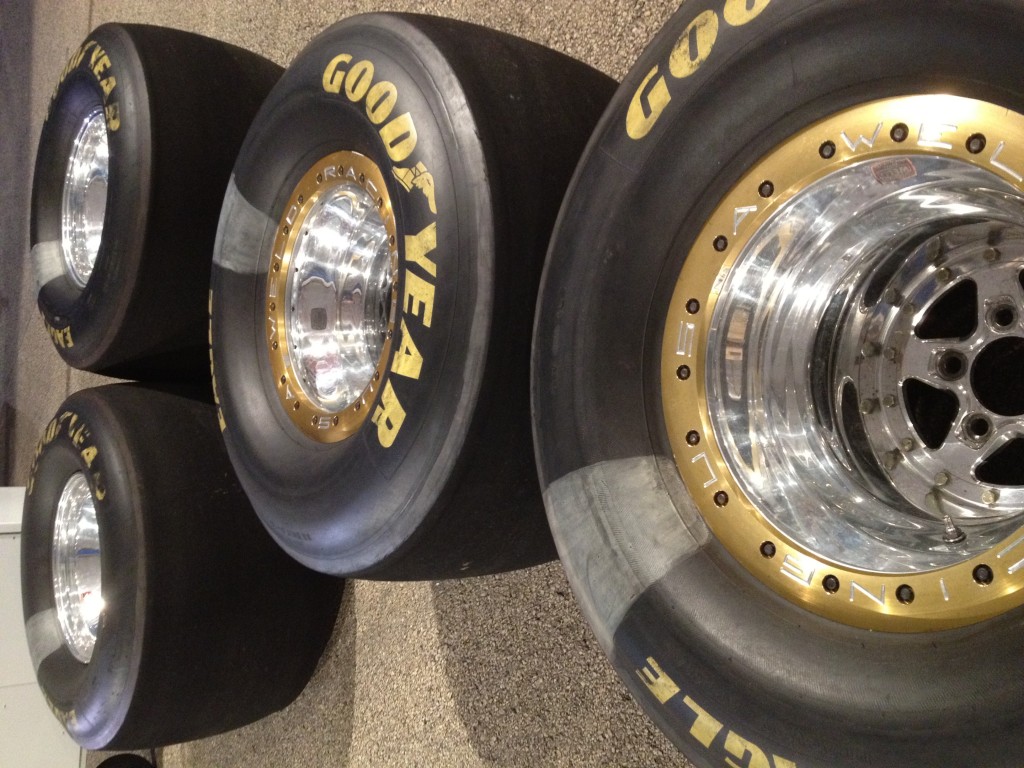
Q: How long will a set of drag slicks last?
…
A: The life of a drag racing tire can be determined by many factors. Tire compound, track conditions, vehicle weight, and horsepower all play a role. Inspect the tire after every few passes and follow the guidelines below to maximize the life of your tires.
How Old is the Tire?
Over time, a tire will dry out.
Just because a tire still has tread on it doesn’t mean it will still perform at its best. When softer racing compounds get older, they lose traction. Check the tire for signs of aging such as cracking, dry rot, or weather checking.
You can learn how to determine the age of a tire here.
How Much Tread is on the Tire?
Check the wear indicators or depth of the tread with a tire tread depth gauge. Take measurements in several places around the tire, on the inside, in the middle, and on the outside of the tire.
Keeping records of the measurements and how many passes are on your tires is a good idea. This gives you a picture over time of what is happening to your tires.
What Does the Wear Pattern Tell You?
The tire should wear evenly across the entire contact patch of the tire. Uneven wear can indicate problems with:
- Alignment
- Broken components in the suspension system
- Weight distribution
- Tire pressure
All tires will wear. When you start to see feathering or balling-up, it’s time to rotate your slicks.
What are Your 60- and 330-Foot Times Telling You?
When a drag car launches, the tires absorb tremendous stress. This stress will eventually cause the carcass material to break down. The carcass of the tire can sometimes start to break down while there is still plenty of tread on the tire.
When your 60- and 330-foot times start to slip and become more inconsistent, it’s a sign that you should be thinking about replacing your tires.
…

Comments